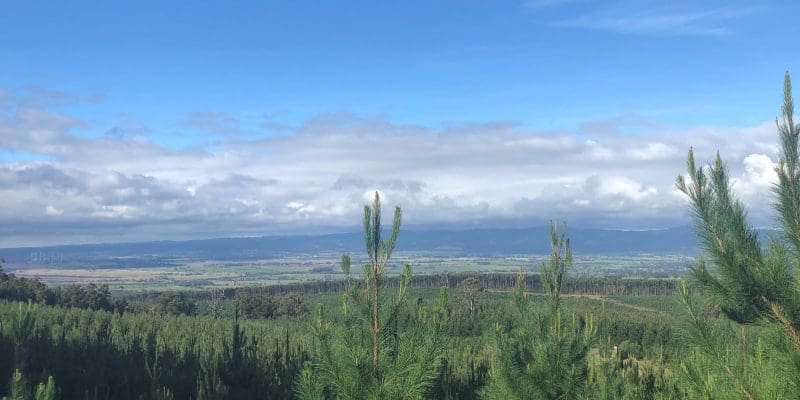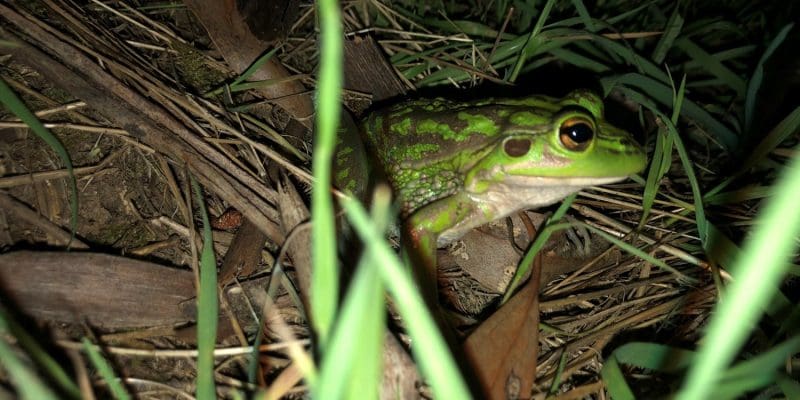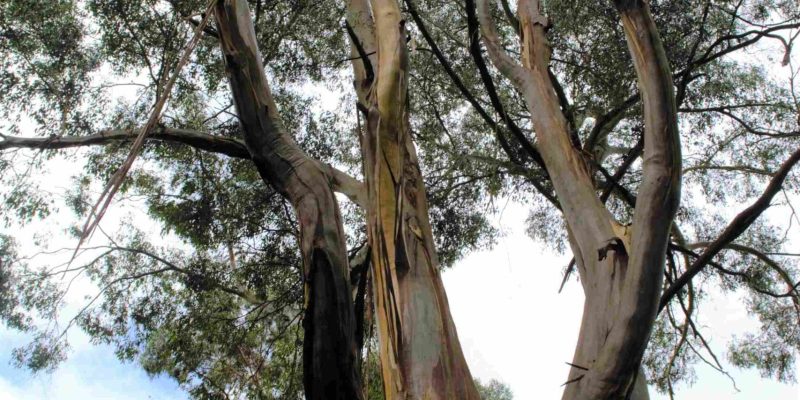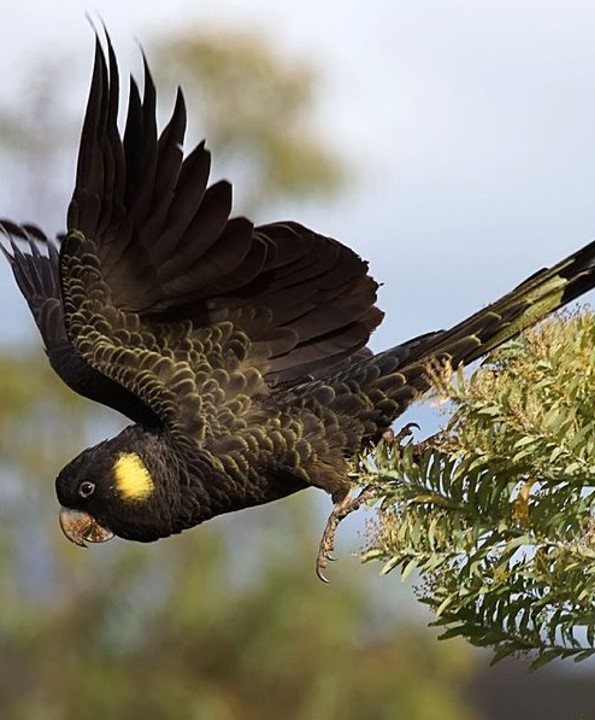A Biodiversity Assessment has been prepared by Ecology and Heritage Partners Pty Ltd (EHP) to assess the impacts of the Project on flora and fauna and to outline mitigation measures that are designed to ensure that the Project impacts are minimised.
The Biodiversity Assessment was completed using data from desk top assessments, used to determine the species likely to be present on site, discussions with local stakeholders and the community who provided valuable local knowledge and extensive field surveys to define the existing conditions on the site.
The project has been designed so that the placement of the turbines and associated foundations and hardstands avoids direct impact on native vegetation and waterways. The widening of public roads and intersections to access the project area, project construction activities such as access roads and underground electrical cabling, and the operation of wind turbines themselves have the potential to impact local ecological values.
As the project design progressed, additional field data was gathered and design parameters were tightened to minimise impacts on native Flora and Fauna and to specifically avoid areas where species of state or national significance may occur.

The relevant legislation and government policies that were considered in the preparation of the biodiversity assessment are:

The project site is in an area of HVP (Hancock Victoria Plantations) owned plantation known as the Thorpdale Tree Farm. Most of the site has been plantation since the 1960s. Scattered throughout the project area are fragments of remnant native vegetation which provides habitat for native fauna. Most of the native vegetation is located along roadsides, waterways and beside dams in small patches which are not well connected. The roads include public roads such as the Strzelecki Hwy, Deans Rd, Golden Gully Rd, Smiths Rd and Creamery Rd as well as private forestry access tracks.
The project area which is largely within the Strzelecki Ranges bioregion includes native vegetation of seven Ecological Vegetation Classes (ECVs):
Significant flora and fauna are defined as those that are covered by the relevant state and federal legislation, such as the EPBC Act, the FFG Act or various local planning schemes.
A detailed assessment of the potential impacts on all the significant flora and fauna which are known to, or predicted to, occur in the study area has been completed.

The surveys found two species of National significance on the site:
Due to the significance of these rare populations, the project design has been modified to ensure there is minimal impacts on these species. Access tracks have been designed to completely avoid impacting Strzelecki Gums.
There is a need to cross Silver Creek – a small waterway that runs through the plantation from Luxford Pond – to access parts of the site. An upgrade to an existing crossing on Silver Creek has been designed to minimise the disturbance to Growling Grass Frog habitat. No Growling Grass Frogs were observed at the crossing site selected which is located away from good quality habitat. Best practice construction techniques will be used to minimise any impacts from construction activities such as sedimentation downstream of these works.
One flora species, Yarra Gum, and no fauna species of State significance were identified during our surveys.
The majority of impacts on native vegetation occur along access routes where road and track upgrades are required to accommodate large transport vehicles that will deliver turbine components and construction equipment. There are also several small patches of vegetation which will be impacted by the installation of underground cabling required to connect the turbines to the existing electricity grid.
The final project design comprises a maximum of 33 turbines. In addition to reducing the number of turbines over several design iterations other design measures adopted to minimise impacts on native vegetation include:
The proposed area of vegetation to be impacted is 14ha hectares (12.34 hectares for the Wind Energy Facility and up to 1.66 Ha for the Terminal Station), which includes up to 54 large trees (49 for the WEF and up to 5 for the Terminal Station site).
It is anticipated that over half of the impacted native vegetation will not need to be physically removed and will be able to be retained even though they will be required to be offset. All trees that do not need to be physically removed will be left in place unless they become a safety risk.
The full 14 ha of vegetation and 54 large trees will be offset by the permanent protection of a patch of similar or better-quality vegetation and same number of large trees in close proximity to the project site. OSMI Australia has identified a number of contiguous patches of vegetation bordering the project site that will meet most of the offset requirements and is in negotiation with the landowner to provide permanent protection of a suitable site.
The project design avoids all known Strzelecki Gum that occur in the area.

The potential for the wind farm to impact on birds and bats needs to be carefully considered in the project siting and design.
The Delburn Wind Farm site has been extensively surveyed to identify the species on site, assessing the likelihood of other species occurring on site, and considered the potential impacts to each of those species from the project.
Species observed on site in the proposed rotor swept area (the area the blades pass through) are Wedge Tailed Eagles and Yellow Tailed Cockatoos. Several additional species which were considered to have the potential to occur in the area were not observed on site.
The impact of wind turbines on bird and bat mortality has been the subject of much scientific research over recent years which has identified which species are most susceptible to collision with blades, how blade speed impacts collision rates and what times of the day or night the different species are most vulnerable.
Approved wind farms are required to prepare a Bird and Avifauna (bat) Management (BAM) Plan. The BAM Plan combines site-specific information with the research to create a list of potential impacts and mitigation measures. It is a risk management plan, designed to identify and minimise risks to birds and bat from wind turbines. Like any risk management plan, BAM Plans usually contain a number of simple curtailment measures which can be implemented if and when the risks and impacts are deemed too high.

The Greater Glider (national significance) and the Powerful Owl (state significance) are known to occur in the wider region but were not observed anywhere in the project area.
Wedge-tailed Eagles, Yellow-tail Black Cockatoo and Strzelecki Koalas do not have an official conservation status in Victoria; however, it is recognised that these species are of particular interest to the local communities and are listed elsewhere in Australia. The potential impacts to these species have been considered and these species will continue to be monitored as the project progresses.
For example, while not technically a ‘significant’ species, the local koala population has been identified as belonging to the Strzelecki Koala population, which are genetically unique. The project is not likely to have a significant impact on the on-going viability of the koala population in the region, due to the relatively low impact on koala habitat. There is the potential for the project to impact on koalas during the construction phase of the project; however, these can be mitigated by the implementation of a ‘Koala Management Protocol’. Further information about the potential impacts and mitigation measures can be found in the Flora and Fauna Management Plan.
Further information about the ecological impacts of the Delburn Wind Farm and the mitigation measures to be put in place to reduce the potential impacts can be found in the projects detailed technical reports.
Stay informed on the latest project updates and Community Benefits opportunities by subscribing to our e-Newsletter.